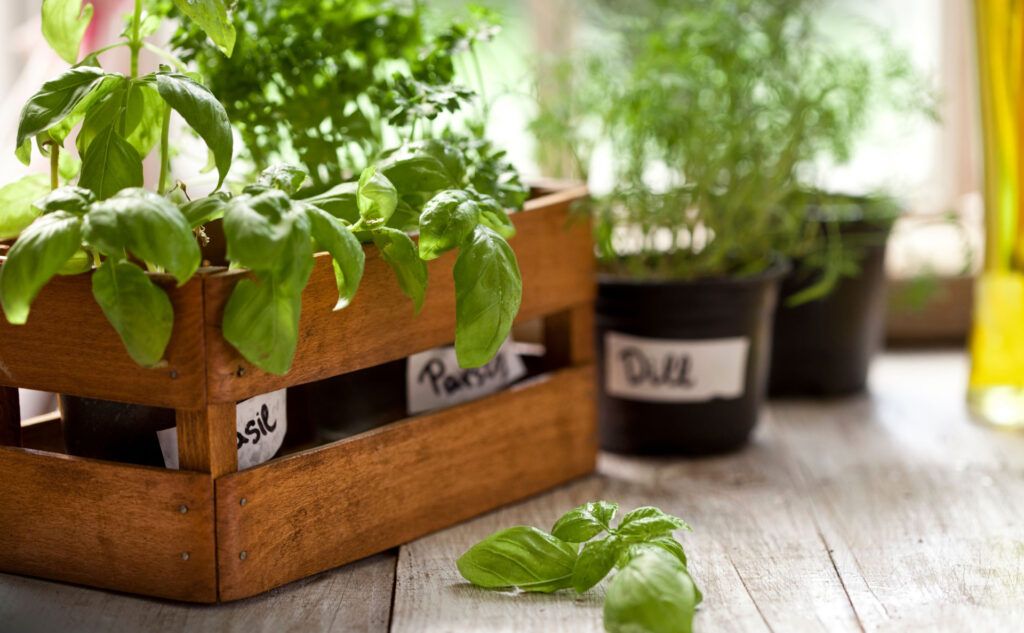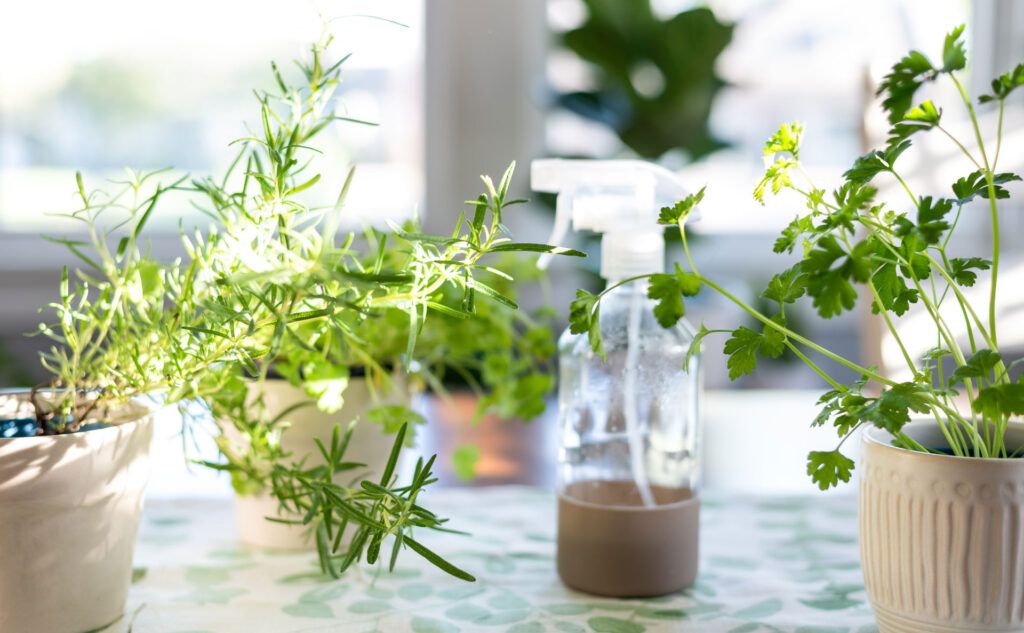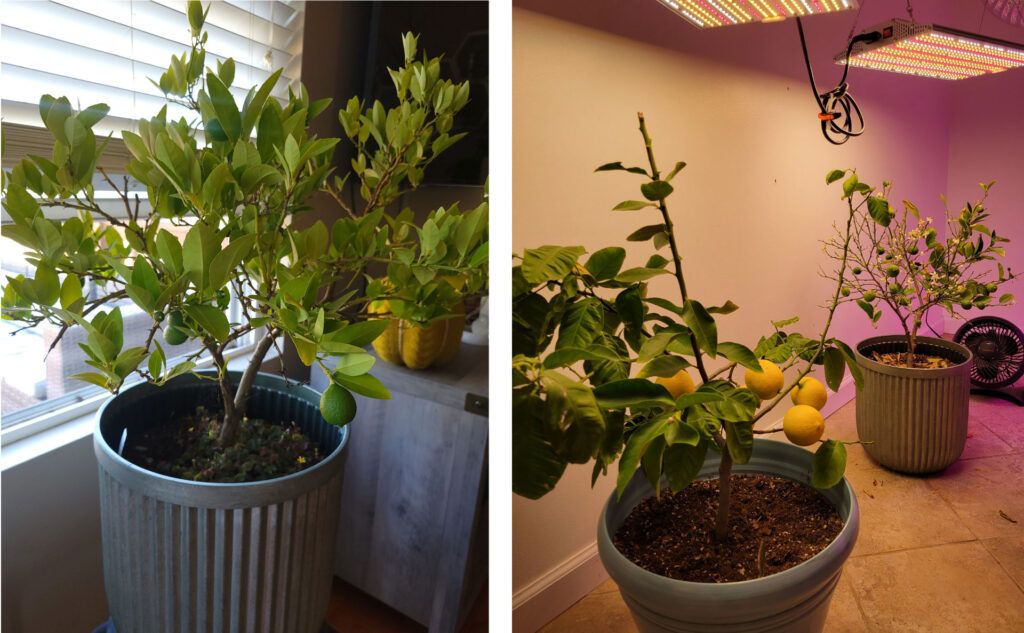Indoor Gardening with Purpose: Fresh Ingredients Year-Round


Imagine walking into your home and being greeted by the vibrant greenery of your very own indoor garden. With aromatic herbs, fresh ingredients, and even small fruiting plants, indoor gardening can turn any space into a productive and inviting haven. Whether you’re looking to save on grocery costs, enjoy a steady supply of organic produce, or simply find joy in gardening throughout the year, growing indoors is a rewarding way to make the most of your space.
Indoor gardening isn’t limited by the seasons—it’s a creative way to bring fresh, homegrown ingredients right to your fingertips, all year long.

Why Start an Indoor Garden?
Cleaner Air & Improved Environment
Indoor plants can improve air quality by absorbing carbon dioxide and releasing oxygen. Many varieties also filter out common indoor pollutants, contributing to a healthier home environment. Beyond that, plants like rosemary, lavender, and mint release natural scents, creating a calm and refreshing atmosphere, while serving as natural air purifiers.
Fresh Ingredients & Fragrance
Indoor gardening brings fresh, flavorful ingredients right to your kitchen. Growing herbs like basil, thyme, and parsley, along with small vegetables such as cherry tomatoes and peppers, means you can elevate any meal without even stepping outside. Imagine snipping fresh basil for homemade pizza or picking crisp lettuce for a salad—all from plants grown just a few feet away.
Growing Tip: Herbs and leafy greens thrive on sunny windowsills, while cherry tomatoes and peppers often require grow lights to flourish. Aim to provide at least 6 hours of light daily for the best harvest.

Functional & Aesthetic Space Use
Your home can serve as more than just a living space—it can be a productive mini-garden. Indoor gardening allows you to turn sunny windows, underused corners, or even shelves into green, productive areas. Whether you opt for a simple pot setup or a more elaborate hydroponic system, you can create a space that combines beauty and functionality, providing fresh produce throughout the growing season and into the winter months.
Seasonal Flexibility
Indoor gardening gives you year-round access to fresh produce, reducing the need for out-of-season purchases - regardless of the weather outside. Bring herbs like rosemary, thyme, and basil indoors to enjoy fresh flavors all winter, or start seeds early to get a jump on spring. Growing citrus trees, like Meyer lemon and Key lime, also offers a rewarding, year-round gardening experience, complete with fragrant blooms and edible fruit. Indoor gardening makes it easy to enjoy fresh, home-grown ingredients in any season.
Growing Tip: Consider a vertical setup or tiered shelves for smaller spaces. Stackable pots and compact hydroponic systems are great for those with limited floor space.
The Best Plants for Indoor Gardening
For house plant enthusiasts who love growing snake plants, spider plants, or succulents, expanding into the world of edibles can be a natural progression. Not only do you get to enjoy the beauty of greenery, but you also have the added benefit of harvesting fresh ingredients. Here are some great edible plants to consider:
1. Fresh Herbs & Leafy Greens
Herbs such as basil, mint, thyme, and parsley are among the easiest plants to grow indoors. They thrive in small pots on windowsills or kitchen counters, providing a consistent supply of fresh flavors. You can also add leafy greens like spinach, arugula, and lettuce to your setup. These fast-growing plants are perfect for a kitchen garden, giving you fresh salad ingredients year-round.
Growing Tip: Use a high-quality potting soil that drains well, and water consistently, but avoid overwatering. Herbs and greens prefer bright, indirect light. Consider using a grow light to ensure they get at least 6 hours of light, especially in winter.
2. Small Vegetables: Tomatoes, Peppers & More
Certain small vegetable varieties can be adapted for indoor growth. Cherry tomatoes, mini peppers, and even baby cucumbers can flourish indoors if given enough light and care. These are excellent additions to your indoor setup, providing fresh ingredients without needing a full outdoor garden.
Growing Tip: These plants often require more light than herbs, so a grow light and/or a small hydroponic system may be necessary. In addition, flowering vegetables will need to be hand pollinated.
3. Citrus Trees & Small Fruits
Citrus trees, such as Meyer lemons or Key limes, and even dwarf varieties of figs can be grown indoors with the right care. These plants not only produce delicious fruit but also fill your home with their fragrant blooms. Goji berries and strawberries are also viable options, offering fresh produce in compact containers. Growing Tip: Ensure fruiting plants receive enough light—ideally 8-12 hours daily. Regularly feed them with a balanced fertilizer to keep them healthy and productive.
Setting Up Your Indoor Garden: From Simple to Sophisticated
Starting an indoor garden can be as simple or elaborate as you’d like, allowing you to adapt your space and resources to your gardening goals. Here are a few popular setups to consider:
- Sunny Window Sills: The simplest approach is to place pots on windowsills with plenty of direct sunlight. This setup works especially well for herbs like basil, rosemary, and mint, as well as leafy greens like lettuce and arugula. These plants thrive with 4–6 hours of sunlight daily, making a sunny windowsill an ideal spot. Be mindful to rotate plants occasionally for even growth, and consider adding a small saucer under each pot to catch excess water.
- Tiered Shelves & Vertical Gardens: If you’re short on space, tiered shelving units or vertical gardens are excellent ways to maximize growing area. Vertical gardening setups allow you to grow multiple plants in a compact space, which is ideal for kitchens, small apartments, or balconies. For added functionality, choose shelves with adjustable heights to accommodate plants of various sizes or select wall-mounted planters that bring your garden up and off the floor. Use this method to grow a mix of herbs, leafy greens, and small, cascading plants like strawberries or trailing mint varieties.
- Grow Lights and Hydroponic Systems: When natural light is limited, grow lights are a fantastic solution. LED grow lights are energy-efficient and can be adjusted to provide the right spectrum of light for plant growth. Position these lights 6–12 inches above your plants, depending on light intensity, and aim to give plants about 8–12 hours of light per day.
For those looking for a more sophisticated setup, hydroponic systems offer a soil-free approach, using nutrient-rich water to support plant growth. These systems are perfect for growing herbs, greens, and small vegetables and often come with built-in LED lights, making them ideal for kitchens or other areas lacking natural light. A countertop hydroponic kit or vertical hydroponic tower can produce faster growth and higher yields than soil gardening.

Growing Tip: Ensure pots have proper drainage to avoid root rot, especially in smaller setups. Adding small pebbles to the bottom of the pots can help with drainage, and regular pruning will keep your plants healthy and productive.
Conclusion
Indoor gardening is more than a hobby—it’s a sustainable way to enjoy fresh, organic produce all year. From fragrant herbs to small vegetables and even dwarf fruiting plants, you can grow a range of edibles inside your home, providing your kitchen with fresh, homegrown ingredients.
Ready to bring nature’s bounty indoors? Explore our range of container-friendly plants and discover how easy it is to grow fresh, flavorful produce right at home.
Additional Resource:
For more indoor gardening tips, check out the National Garden Bureau’s guide.
- Article Categories:
- Ideas & Inspiration
- Winter Gardening




































